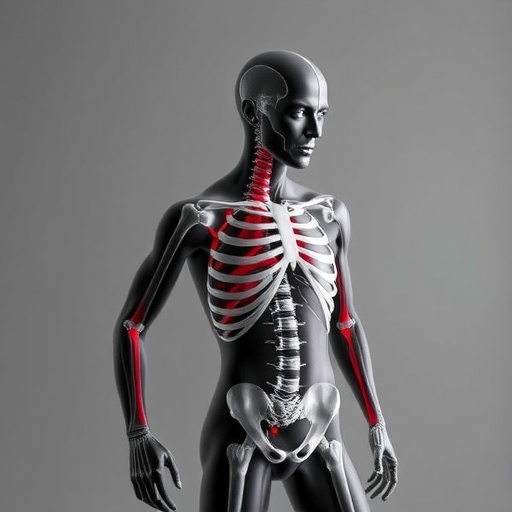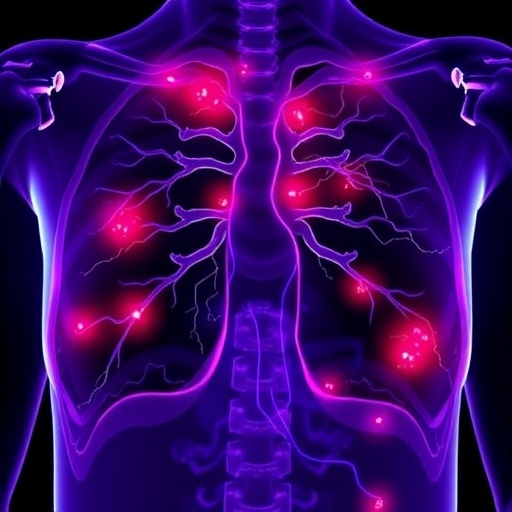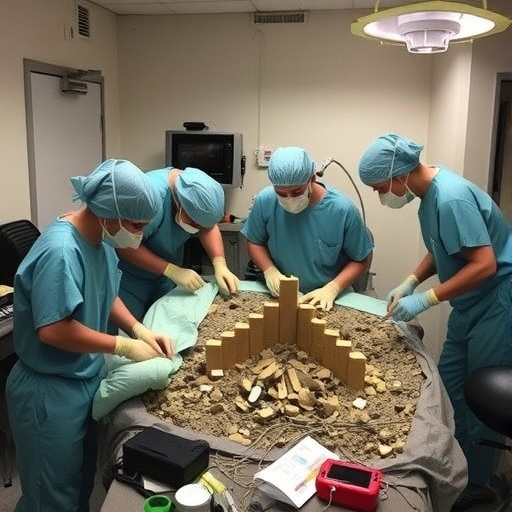Our bodies operate on a finely tuned 24-hour cycle known as the circadian rhythm, a biological clock that orchestrates a wide range of physiological processes including sleep patterns, hormone release, and metabolism. For years, scientific inquiry has focused largely on a core set of circadian clock genes that govern these rhythms. However, a groundbreaking study led by researchers at Baylor College of Medicine unveils a deeper layer of complexity behind these processes, illustrating how dietary factors and individual genetic differences entwine to shape the liver’s daily gene expression patterns, particularly those involved in fat metabolism.
Published in the prestigious journal Cell Metabolism, this research challenges the traditional understanding of genetic influence by revealing a dynamic interplay between nutrition and genetics that modulates the liver’s gene activity throughout the day. The implications are profound, suggesting that how and when our genes switch on and off in response to diet may vary greatly from person to person, potentially influencing susceptibility to obesity-related diseases and opening new avenues for personalized medicine strategies such as chronotherapy — the alignment of medical treatment schedules with the body’s natural biological rhythms.
Central to this investigation was the question that pervades both clinical and public health concerns: why do some individuals accumulate weight or develop liver complications more readily than others, despite consuming similar diets? Dr. Dongyin Guan, who spearheaded the study and serves as assistant professor of medicine with specializations in endocrinology and molecular biology at Baylor, highlights that the answer lies in the intricate relationship between one’s genetic blueprint and their nutritional environment. His team identified that specific genetic variants modulate the timing and intensity of gene activation in the liver in response to food intake, effectively dictating temporal windows during which fat metabolism genes exhibit rhythmic activity.
The study employed an integrative approach, analyzing human liver samples alongside genetically distinct mouse strains. This dual-species scrutiny allowed the team to observe how hepatic genes oscillate on a diurnal schedule and how these oscillations shift when dietary composition changes, particularly with exposure to a high-fat diet. In mice subjected to lipid-rich nutrition, gene activity rhythms did not uniformly blunt or enhance; instead, certain genes maintained their cycling, others abruptly lost their rhythmicity, and a subset even acquired new oscillatory behavior. This nuanced response underscores the individualized nature of metabolic regulation and how dietary inputs perturb normal gene expression patterns in genetically dependent ways.
Going beyond traditional gene expression profiling, the researchers delved into the three-dimensional architecture of the genome to unravel mechanisms of temporal gene regulation. They mapped how distant regulatory elements known as enhancers physically contact gene promoters at specific times of day, facilitating or dampening gene transcription in a rhythmic fashion. Strikingly, these enhancer-promoter interactions were governed by both genetic variation and nutritional state, accounting for over 80% of their daily rhythmicity. This highlights an intricate genomic choreography where the spatial folding of DNA is modulated by environmental and inherited factors to sculpt time-of-day-specific gene expression landscapes.
One of the most exciting revelations from the study was the identification of ESRRγ (Estrogen Related Receptor Gamma) as a potent regulator of these diurnal enhancer-promoter dynamics. Not traditionally categorized within the family of canonical circadian clock genes, ESRRγ emerged as a ‘noncanonical’ clock regulator critical to maintaining rhythmic gene interactions related to fat metabolism in the liver. Genetic deletion of ESRRγ in mice resulted in the loss of these rhythmic chromatin contacts and subsequent impairments in hepatic lipid processing, firmly establishing ESRRγ as a key player linking genetic architecture to metabolic timing.
Observations of fat droplet size fluctuations in the liver further corroborated the temporal dimension of fat metabolism delineated by ESRRγ activity. In genetically distinct mouse models, only those possessing functional ESRRγ exhibited significant diurnal variations in hepatic fat storage, emphasizing that individual genotypes not only influence how fats are metabolized but also when this metabolic processing peaks during the day. These findings challenge the prevailing one-size-fits-all recommendation concerning diet and emphasize the significance of considering genetic background when evaluating metabolic health and disease risk.
While this study concentrated on liver metabolism and lipid dynamics, its broader implications suggest that similar genetic-nutrition circadian interactions may operate in other organs and influence a wide spectrum of diseases. The researchers posit that deciphering the time-dependent gene regulatory networks shaped by both inherent genetic diversity and environmental factors could revolutionize personalized medicine. By tailoring meal timing, medication schedules, and therapeutic interventions to the patient’s genetic and circadian profile, healthcare can become more effective, minimizing side effects and maximizing efficacy through synchronized biological engagement.
Moreover, these insights add a vital piece to the emerging puzzle of how lifestyle factors intertwine with genetic predisposition to orchestrate complex diseases like obesity, diabetes, and nonalcoholic fatty liver disease. Recognizing the temporal modulation of gene-environment interactions elevates our understanding of metabolic regulation beyond static snapshots, portraying it as a dynamic, temporally coordinated process susceptible to precise modulation. It opens a promising field where genetic screening combined with chronobiology could guide nutrition and clinical strategies with unprecedented precision.
This work stands as a testament to the power of multidisciplinary research combining genomics, chronobiology, molecular biology, and nutritional science. By integrating high-resolution gene expression data with sophisticated 3D chromatin interaction maps, the Baylor-led team has provided a roadmap for future investigations into the molecular underpinnings of circadian metabolic control. As this field evolves, it may spur innovative approaches to manage metabolic disorders by exploiting the inherent rhythm of gene regulatory networks coupled with an individual’s genetic landscape.
Future research directions indicated by this study include exploring the extent to which other metabolic pathways, immune responses, or neurological processes are governed by similar enhancer-promoter rhythmicity influenced by genetic and dietary factors. Additionally, extending this work to diverse human populations with varying genetic backgrounds and dietary habits could help pinpoint the most impactful gene variants for targeted therapeutic intervention. Ultimately, these endeavors could lead to the development of personalized lifestyle and medical regimens designed to harmonize with both our genome and our body’s internal clock.
In conclusion, this pioneering study from Baylor College of Medicine enriches our comprehension of how everyday factors like diet interact with the intricate machinery of our genes to regulate liver metabolism in a time-dependent manner. It challenges prior conceptions of static genetic function by unveiling the fluid and conditional nature of gene activity rhythms, shaped by a dynamic interface between our environment and genotype. Such knowledge not only advances fundamental science but also paves the way toward a future where chronotherapy and individualized nutritional guidance become mainstays of effective disease prevention and management.
Subject of Research: Animals
Article Title: Genetics-nutrition interactions control diurnal enhancer-promoter dynamics and liver lipid metabolism
News Publication Date: 25-Aug-2025
Web References:
Cell Metabolism Article
DOI link
References: The study referenced multiple NIH grants as well as funding from CPRIT, V Foundation, USDA/ARS, Pew Foundation, and other institutions.
Keywords: Health and medicine, Clinical medicine, Diseases and disorders, Human health, Life sciences, Cell biology, Neuroscience, Physiology
Tags: Baylor College of Medicine research findingsbiological clock and healthchronotherapy and genetic differencescircadian rhythms and metabolismdietary factors and genetic influencefat metabolism and gene regulationgene-diet interactionsindividual variations in diet responseliver gene expression patternsnutritional impacts on gene activityobesity-related disease susceptibilitypersonalized medicine strategies





